Paubhā (Devanagari: पौभा) is a traditional religious painting made by the Newar people of Nepal. Paubhas depict deities, mandalas or monuments, and are used to help the practitioner meditate. The Tibetan equivalent is known as Thangka. Most paubhas show Buddhist subjects, but a few have Hindu themes. The paintings are made to earn religious merit both for the artist and the patron. Newar Buddhists commission artists to paint paubhas which are displayed during festivals and other special occasions. The traditional painters of paubhas are the Chitrakar caste who are known as Pun (पुं) in Nepal Bhasa.
INTRODUCTION TO THANKA
A thangka, variously spelt as thangka, tangka, thanka, or tanka (Nepali pronunciation: [ˈथान्का]; Tibetan: ཐང་ཀ་; Nepal Bhasa: पौभा), is a Tibetan Buddhist painting on cotton, silk appliqué, usually depicting a Buddhist deity, scene, or mandala. Thangkas are traditionally kept unframed and rolled up when not on display, mounted on a textile backing somewhat in the style of Chinese scroll paintings, with a further silk cover on the front. So treated, thangkas can last a long time, but because of their delicate nature, they have to be kept in dry places where moisture will not affect the quality of the silk.
Most thangkas are relatively small, comparable in size to a Western half-length portrait, but some are extremely large, several metres in each dimension; these were designed to be displayed, typically for very brief periods on a monastery wall, as part of religious festivals. Most thangkas were intended for personal meditation or instruction of monastic students. They often have elaborate compositions including many very small figures. A central deity is often surrounded by other identified figures in a symmetrical composition. Narrative scenes are less common, but do appear.
Amoghasddhi’s direction is the north. His time is midnight and so in visualizing Amoghasiddhi he is surrounded by a sky of midnight blue. His element is air, and thus he has the power of the wind, both fierce and gentle, warming and cooling, a baby’s breath, a tree-breaker. His particular wisdom, as we have discovered, is the wisdom of all accomplishing action. He is described as the Buddha of the realization of the Bodhisattva path, a Buddha of actions, actions perfected and free of karmic consequences, actions that are pure, crystallized and transparent.Amoghasiddhi’s color is green. His vehicle is Garudha a half human and half bird, mythical imaginary creature. Amoghasiddhi’s sits in abhaya mudra with his right hand held palm facing outward in front of the heart, this Mudras mean protection and removal of fear. That quality of fearlessness essential to living the spiritual life. His spiritual object is the double dorje that symbolizes the highest comprehension of truth, the incomparable power of a Buddha.
















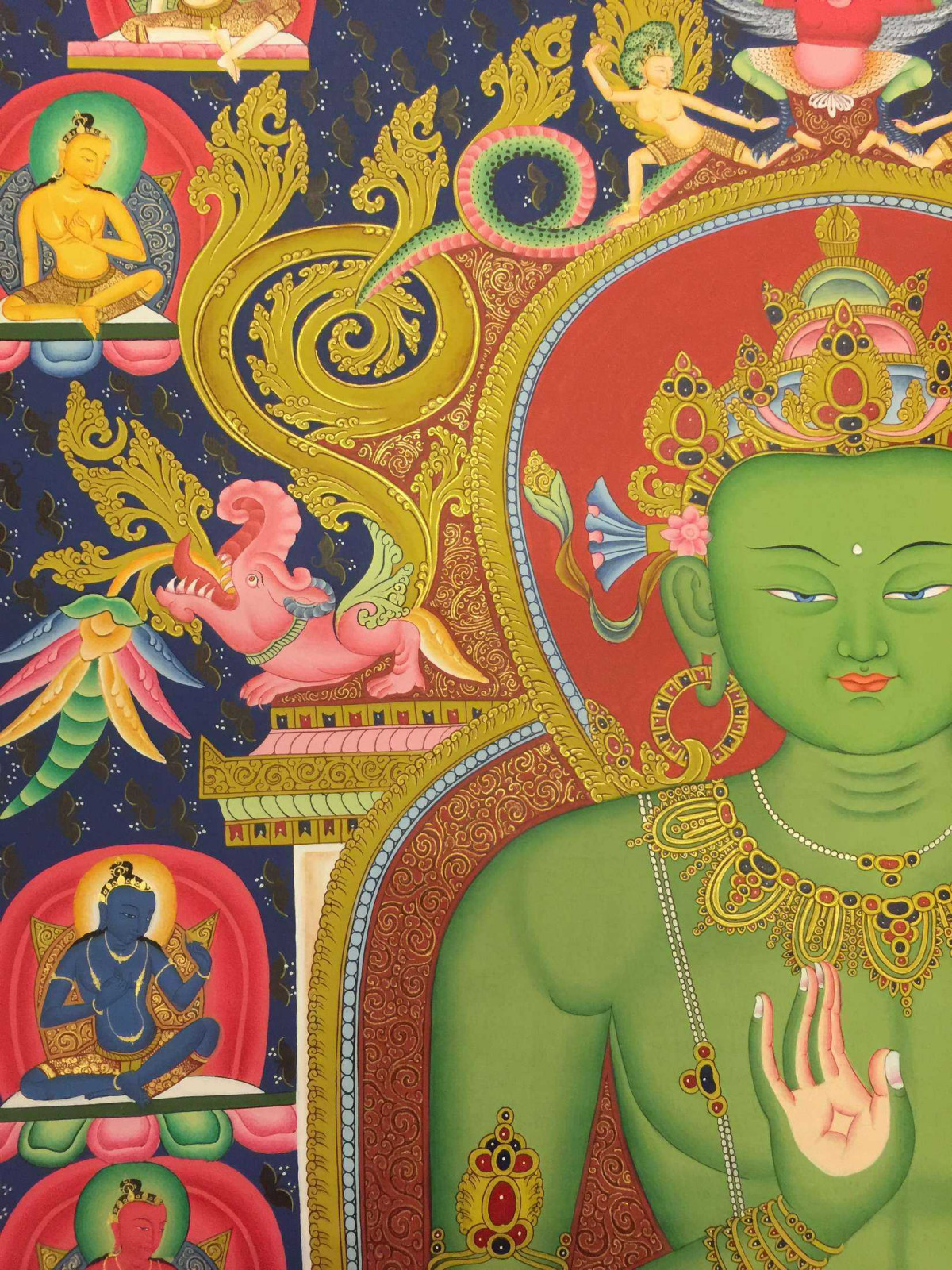
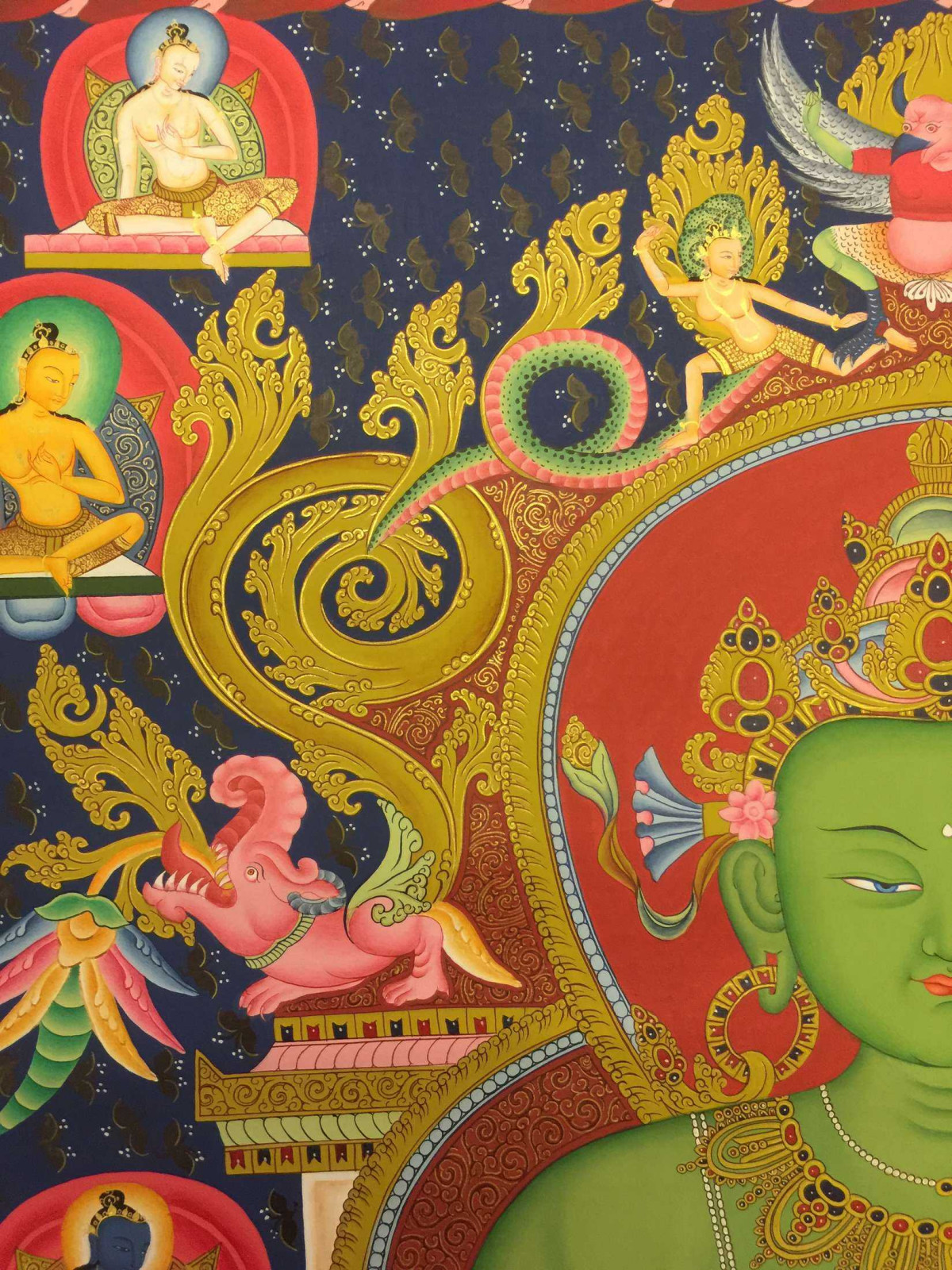


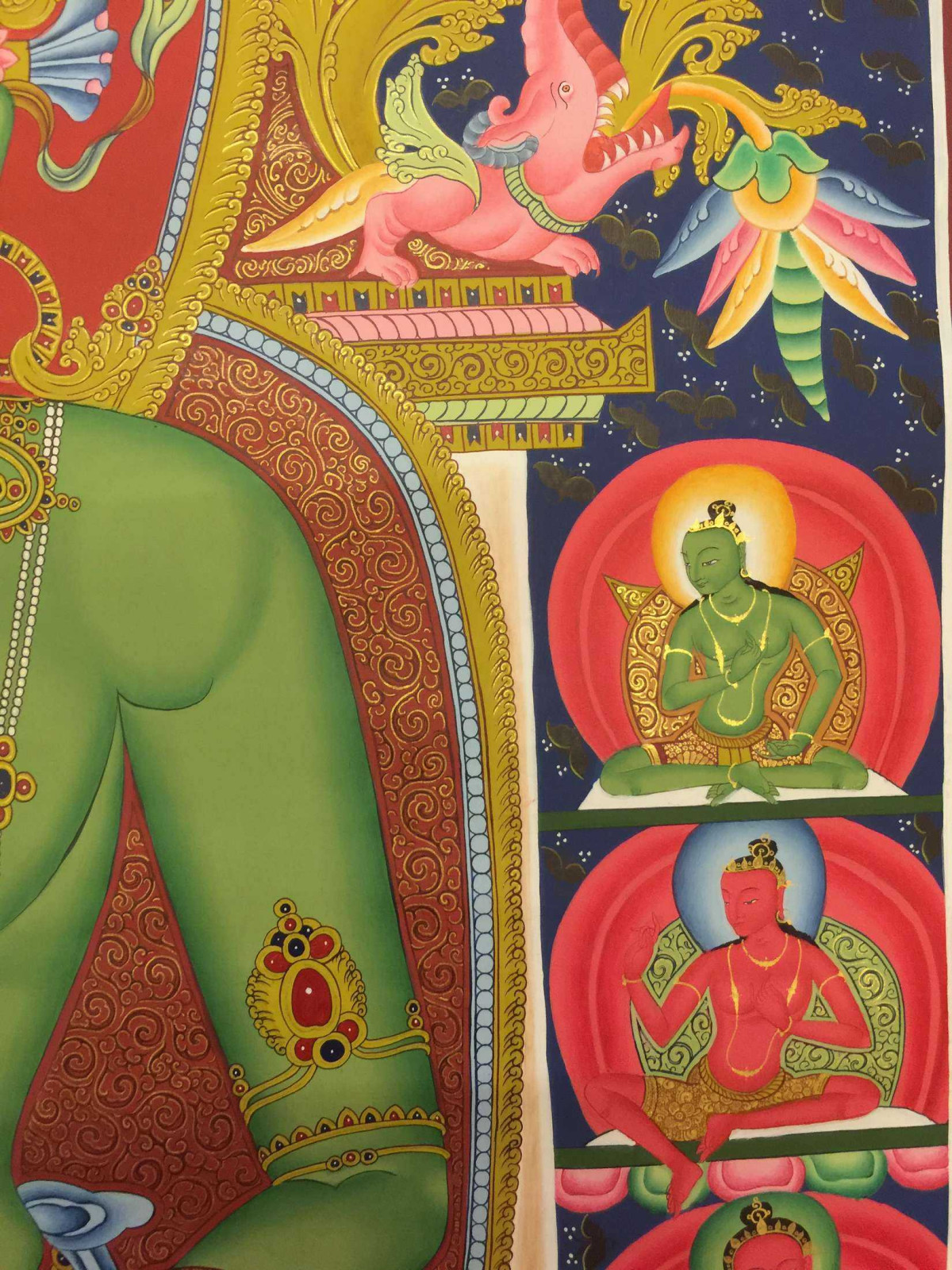
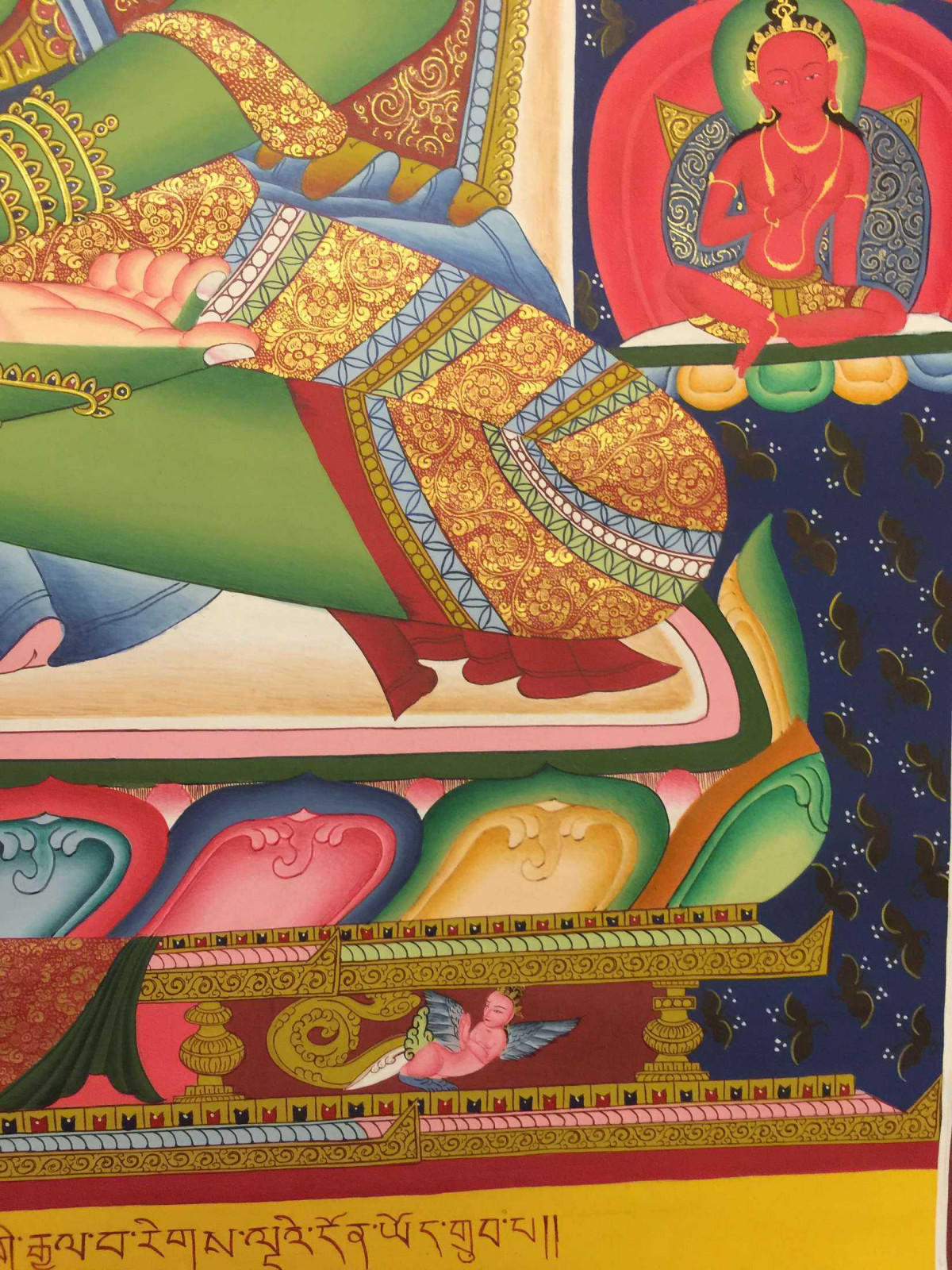
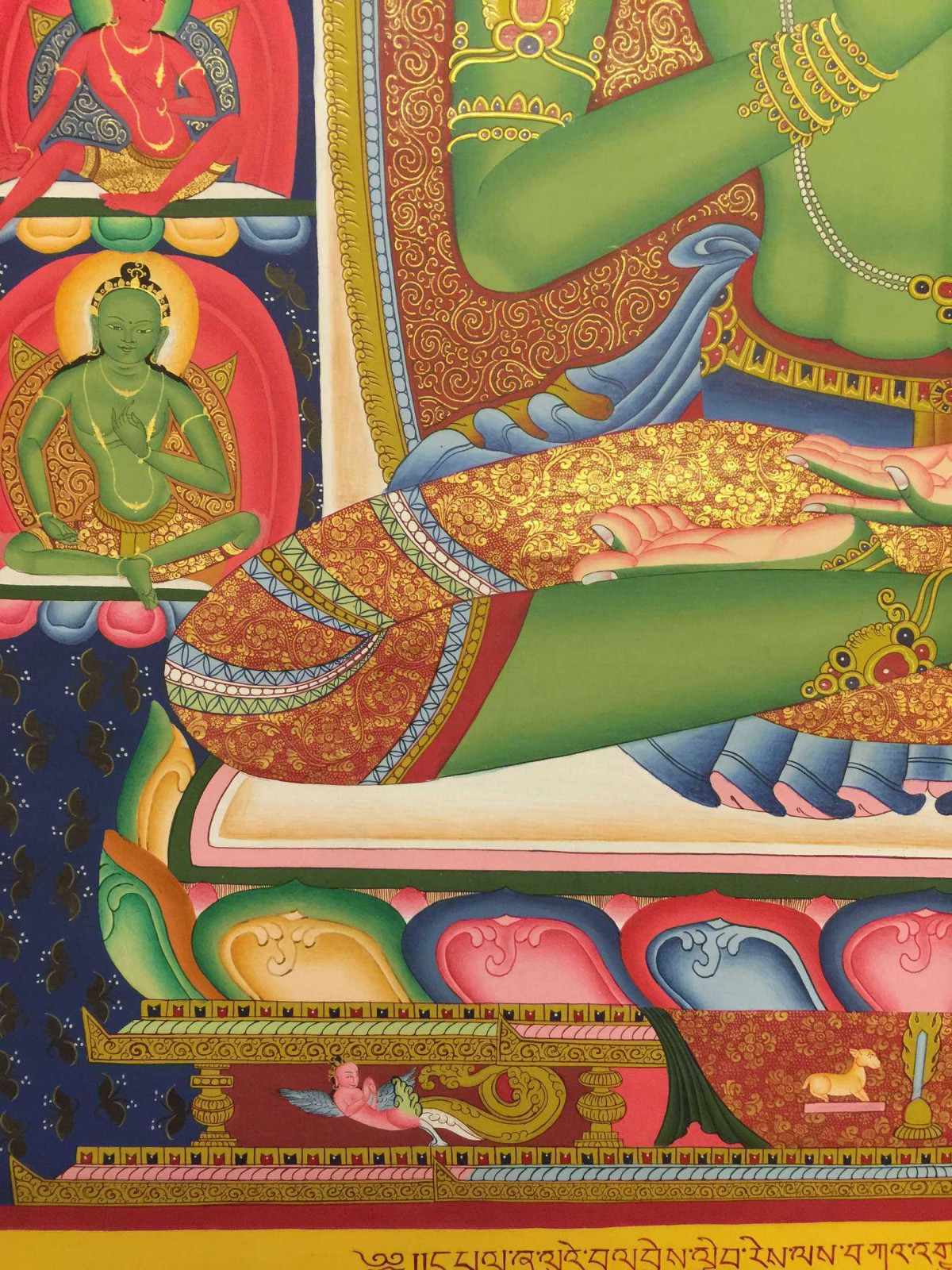
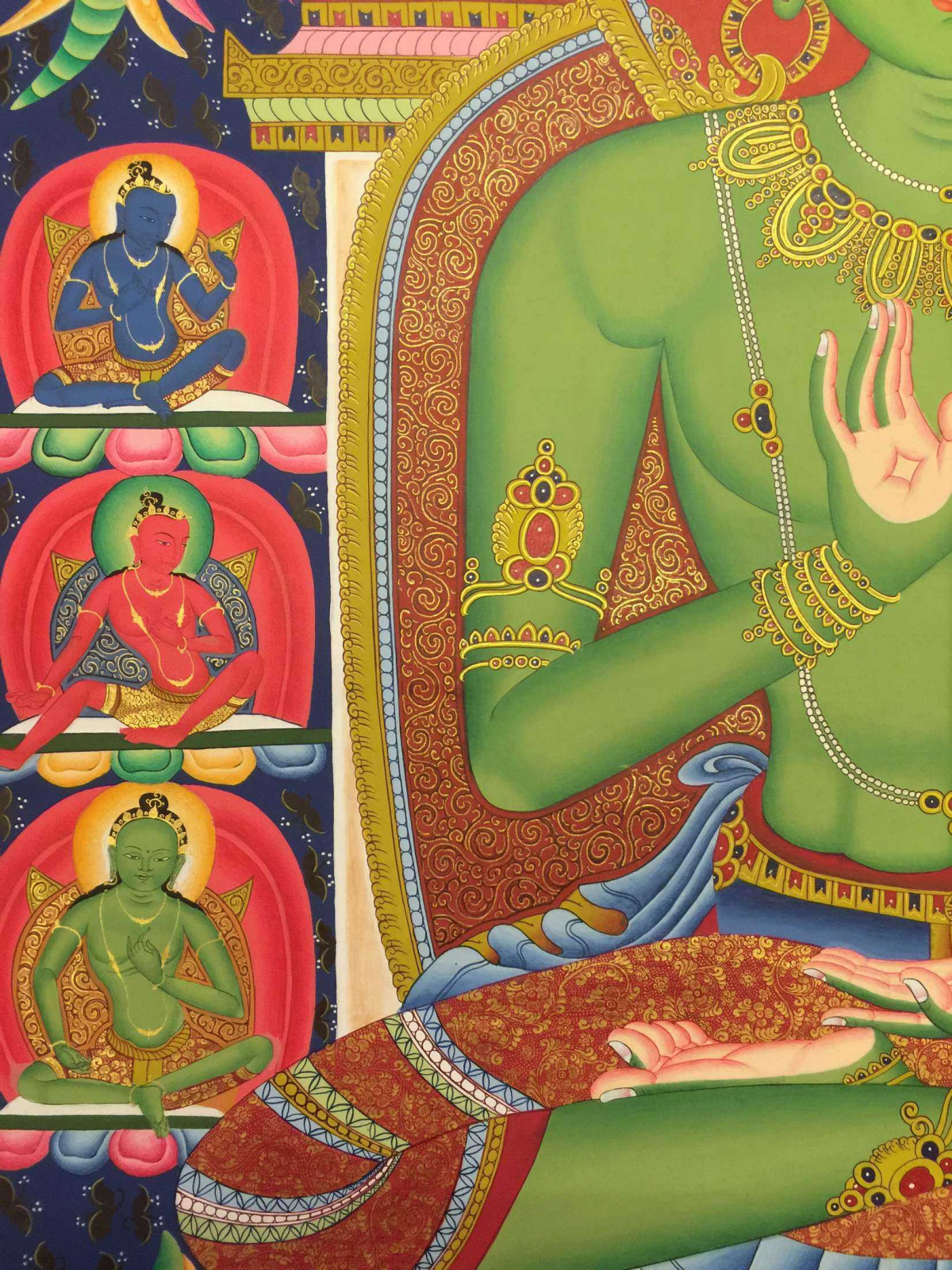
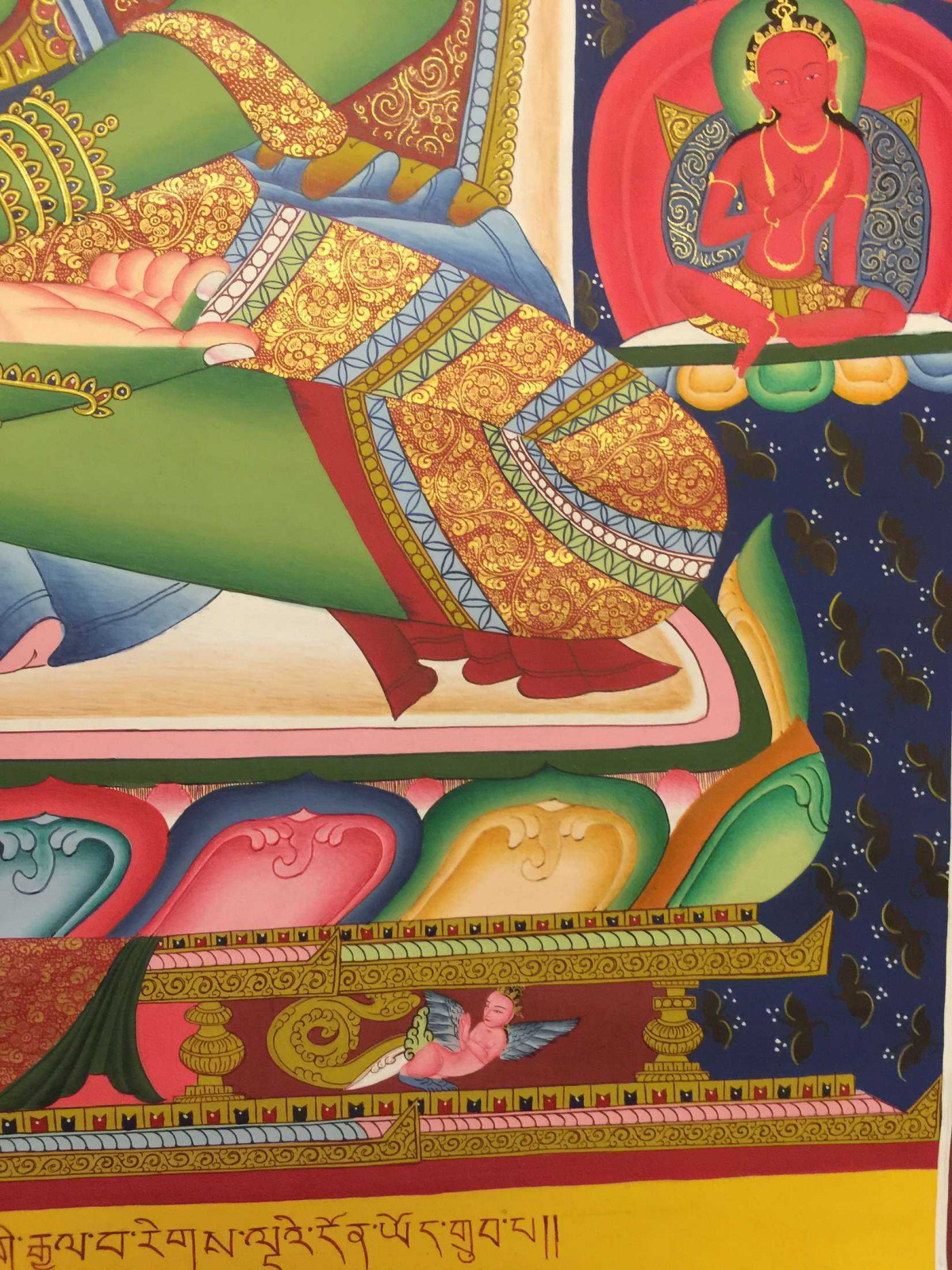
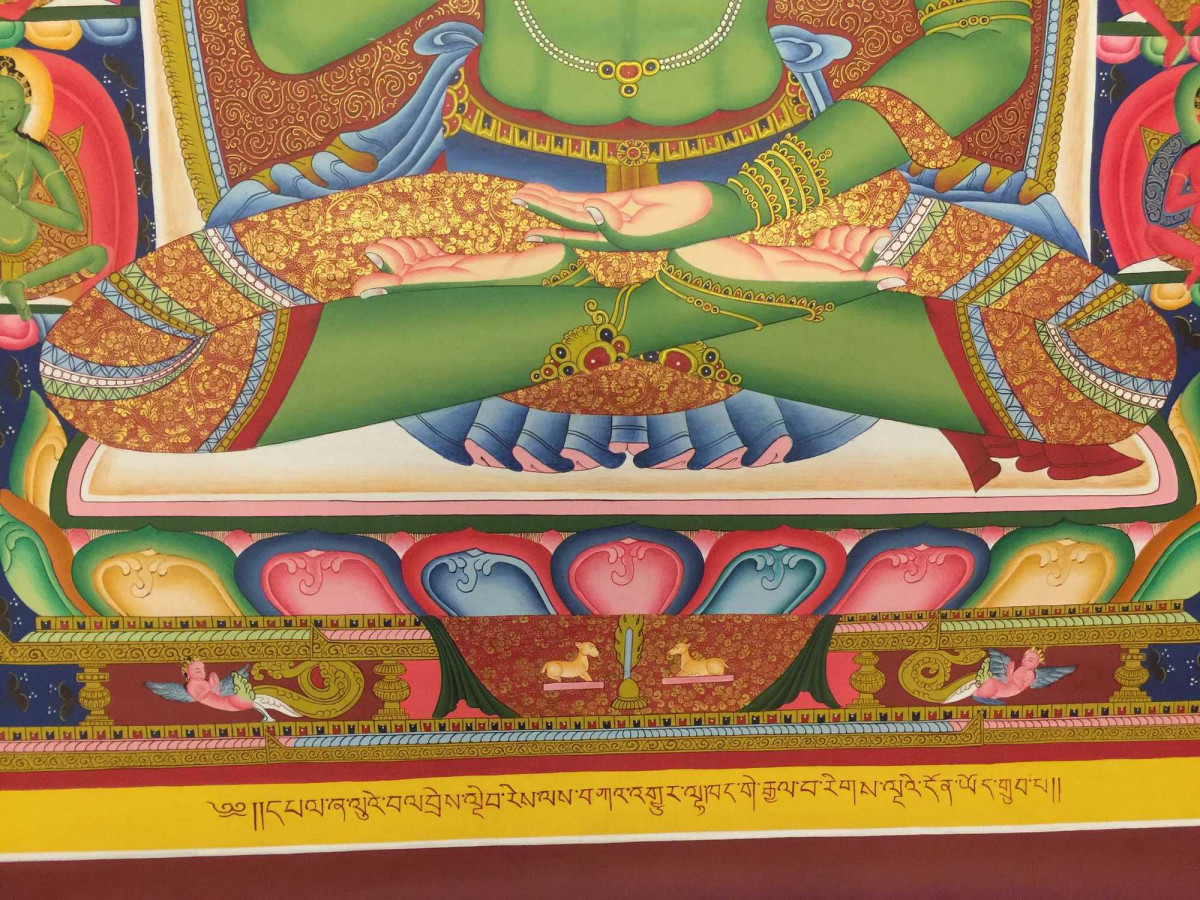
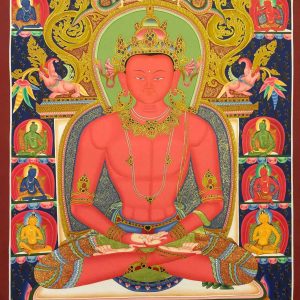
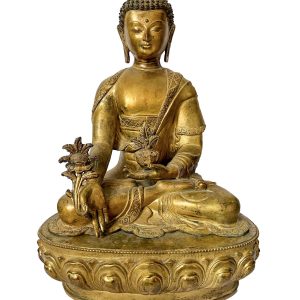

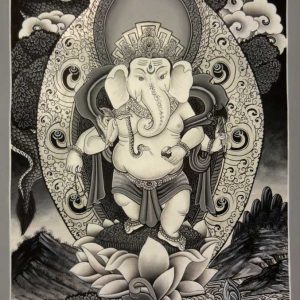
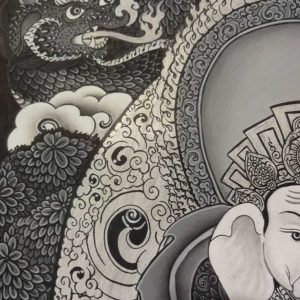

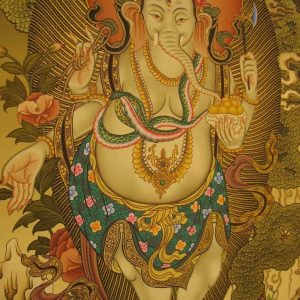
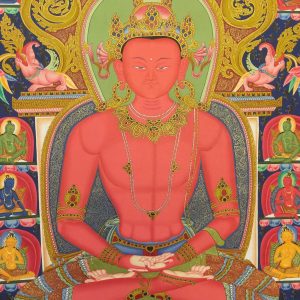
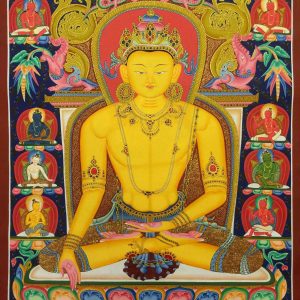

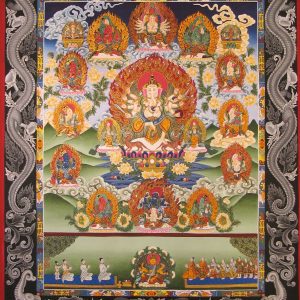




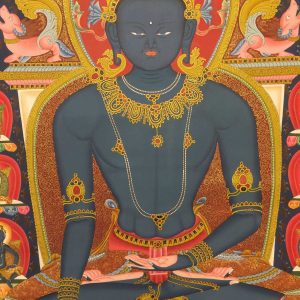


Reviews
There are no reviews yet.